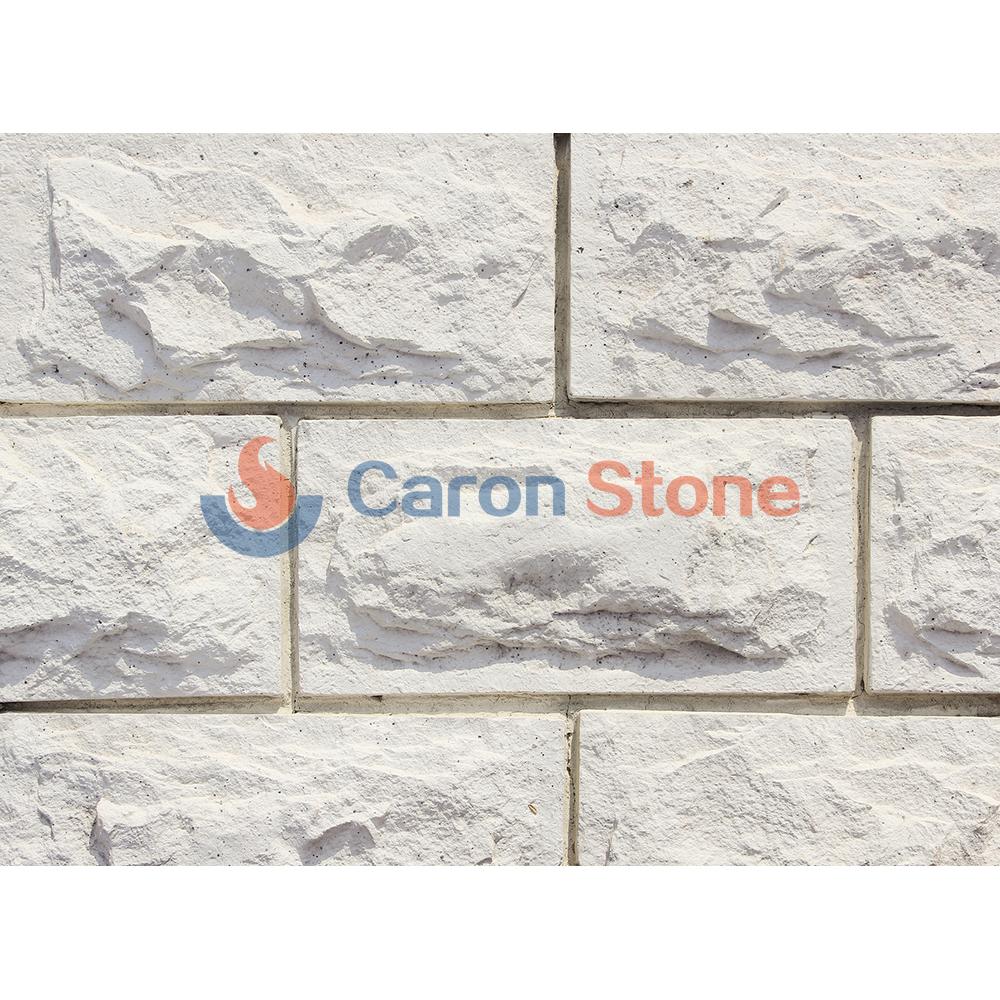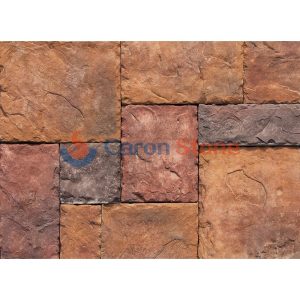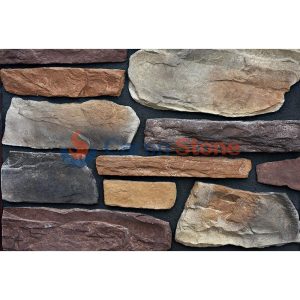
The Application Of Texture And Color Of Artificial Stone Materials In Cultural Stone Wall Design -
In modern architectural design, the wall is not only a part of the building structure, but also an important element to show the design concept and create an atmosphere. Artificial stone materials are widely used, so their texture and color become rather significant in cultural stone wall design. Artificial stone offers limitless opportunities for wall design and breaks the restrictions of natural stone with its varied textures and vivid colors. Artificial stone materials are forming beautiful and useful cultural stone walls in their distinctive manner from the delicate texture to the great hue. This article will explore the texture and color application of artificial stone materials in cultural stone wall design, revealing how it injects vitality and creativity into the space.

GB-B12 Artificial cultured castle stacked stone wall cladding veneer tile
Texture characteristics of artificial stone materials
One of the main factors explaining artificial stone materials’ popularity in cultural stone wall design is their texture. Artificial stone materials can produce richer and more varied texture effects than actual stone ones:
1. Diverse texture effects
Artificial stone materials can replicate the roughness of sandstone, the smoothness of marble, and the texture of slate among other natural stone textures. This range of texture effects lets designers select the most appropriate texture to produce cultural stone walls depending on many design criteria. For example, in a modern minimalist style space, designers can choose high-gloss artificial stone with a smooth surface to create a fresh and simple visual effect; in a retro style space, you can choose a rough texture that imitates ancient sandstone to add a sense of history and heaviness.
2. Texture layering
Artificial stone materials can be given a rich sense of layering via several skills during the manufacture process. The fineness of the surface treatment also reflects this idea of layering, not only in the texture depth. For example, the relief process can make the cultural stone wall into a decorative surface with a three-dimensional effect, making the wall look more vivid and three-dimensional. The wall design might have more visual layers and motion by means of this layered texture effect.
3. Soft feel
Many imitation stone materials have been highly polished and treated; their surface feels soft and pleasant. This soft texture not only enhances the overall beauty of the wall, but also brings a better tactile experience to the user. This smooth texture is particularly appropriate for indoor environments including study rooms and bedrooms that must foster a relaxing ambiance.
Artificial stone materials: color application
Color is an important factor affecting the visual effect of cultural stone walls. The adaptability of imitation stone materials in color application offers several options for wall design:
1. Rich color range
Artificial stone materials have a very wide range of colors, from warm beige, elegant gray, to deep black, lively blue, everything. This depth of color enables designers to select the most appropriate hue depending on the general tone and ambiance demand of the place. For example, in modern homes, designers can choose soft beige or gray artificial stones to create a warm and harmonious atmosphere; while in commercial spaces, bright colors such as blue or green can be used to attract attention and enhance the brand image.
2. Gradient effect of color
Particularly in cultural stone wall construction, artificial stone materials can provide a gradient effect of hue by means of technological methods. Artificial stone materials with gradient colors allow designers to create visual depth and layering sensation. For example, through the gradual color change, the cultural stone wall can be designed into a dynamic and artistic wall, making the space more eye-catching.
3. Customization of color
Many artificial stone material manufacturers provide color customization services, and designers can customize exclusive color schemes according to the specific needs of the project. This tailored solution helps designers to guarantee that the wall color is quite consistent with the general space style and enable more exact achievement of the design effect. For instance, designers can personalize distinctive hue artificial stone walls based on the brand image of a high-end hotel to accentuate the property’s own character and style.
Artificial stone materials’ application examples in architectural stone wall design
1. Wall design of modern offices
Artificial stone cultured stone walls are extensively applied in the walls of conference rooms and reception spaces in modern office design. To accentuate the sophisticated and professional attitude of the area, designers selected smooth gray artificial stones. Concurrent with this, the wall gains visual impact and hierarchy by means of fine texture processing and gradient color application. This design not only enhances the overall image of the office, but also provides employees with a comfortable and vibrant working environment.
2. Living room wall of high-end residence
High-end residence’s living room wall design features an eye-catching cultural stone wall made of synthetic stone materials. The designer presented a distinctive textural appearance using relief technology and selected warm beige artificial stone. The color and texture of the wall are perfectly integrated with the overall style of the living room, creating a comfortable and elegant living space for the residents. Simultaneously, with careful texture and rich hues, this design improves the artistic environment and visual appeal of the living area.
3. Installation in public art space
In some public art spaces, the use of artificial stone cultural stone walls shows its unique artistic charm. Artists design wall installations using artificial stone elements by imaginatively blending their colors and textures. For instance, the dynamic art display wall of an art exhibition hall in a particular city forms from fake stones with a range of color gradients. Apart from drawing the audience’s attention, this inventive design gives the public art space contemporary and current components.

GB-S01 China artificial cultured stone shadow rock wall cladding panel ledgestone veneer
The use of texture and color of artificial stone materials in cultural stone wall design demonstrates its wide applicability and innovative potential in modern architectural design. Artificial stone materials not only offer a range of options for wall design but also improve the whole beauty of the room by their distinctive visual impacts and tactile experience, from delicate texture to rich colors. By means of the texture and color of artificial stone materials, we can observe that their application in contemporary architecture and interior design is so injecting more originality and vitality into the area. I hope that the analysis in this article can provide you with valuable references for your future design projects, so that you can give full play to its unique texture and color advantages when using artificial stone materials, and create a more vivid and beautiful cultural stone wall design.




